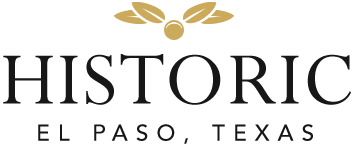Alamo School, like Aoy and Bowie, are directly connected to the Mexican Revolution and the large scale immigration that accompanied it. The growing school aged population of immigrant children and children of immigrants had a tremendous impact on the educational system in El Paso. The movement of Mexican people across the border between 1900-1920, in large part as a result of the Revolution, expanded the already growing Mexican origin population in El Paso.In the first decades of the twentieth century, the Mexican origin population of El Paso grew tremendously. Mexican American children were concentrated in schools on the Southside of the city. Aoy was the oldest and largest “Mexican school” in the city. Alamo School and Franklin school (on Leon and West Overland, since demolished) also educated large Mexican American student populations. When the Mexican barrio began to grow especially by 1910, “American” parents asked the El Paso School Board to move their children from Alamo and Franklin to the all-white San Jacinto School. Mexican American parents opposed the School Board’s decision to allow this. White families began to move. See Ruth Cummings, “History of Alamo School (1951 seminar paper, UTEP) and Mario T. Garcia, Desert Immigrants: The Mexicans of El Paso, 1880-1920 (New Haven: Yale University Press, 1981), p. 124.
Although Alamo School was built to cater to the “lily white” residents of the Magoffin Addition, by 1906, Attorney Adolph Huffman reported in the school census that only 20 “American” families remained south of Third Street. Alamo School had, like Aoy, become a “Mexican” School. In 1908, of 517 Alamo School students, 500 were Mexican origin children. (See Mario T. Garcia, Desert Immigrants: The Mexicans of El Paso, 1880-1920 (New Haven: Yale University Press, 1981), p.132.
According to Ruth Cummings, “By 1929, most of the people of wealth had moved further out of town—because El Paso had grown so large that the older sections of town near Alamo School had become crowded by business houses. So by this time, most of the pupils at Alamo School were of Spanish-American descent. Today, Alamo School can boast of a one-hundred percent Spanish-American enrollment.” (Cummings, page 40)
In the April 30, 1950 El Paso Times, it states that in 1900, “early residents of the city recall, Alamo school was known as the ‘silk-stocking’ school and served the Magoffin Avenue area, which was then the best residential locations of El Paso.” (Cummings, page 42)
As some point, Alamo School turned over some land to the Houchen Settlement House. The Rose Gregory Houchen Settlement House was founded in 1912 on the corner of Tays and 5th. It had two objectives: creating a rooming house for single Mexican wage earning women and a kindergarten for children in El Segundo. By 1920, medical services were offered, although at the beginning they were limited. Eventually the Freeman Clinic was opened (1921) and later, in 1930, a six bed maternity ward was added. Initially, all the equipment in the Freeman Clinic was donated by Methodist Churches across the United States. In 1937, the small adobe home that housed the Clinic was demolished and a “modern” clinic and maternity hospital, the Newark Methodist Maternity Hospital was built. Houchen provided services in El Segundo, particularly Americanization programs, from 1912-1962. In 1942, the settlement house, hospital, day nursery and El Buen Pastor Methodist Church were labeled “Friendship Square.” The programs were touted as “Christian Americanization,” in contrast to what a Methodist Pamphlet described as Mexican Catholicism’s paganism and superstition. See Vicki L. Ruiz, From Out of the Shadows: Mexican Women in Twentieth-Century America (New York: Oxford University Press, 1998), pp 33-50.

